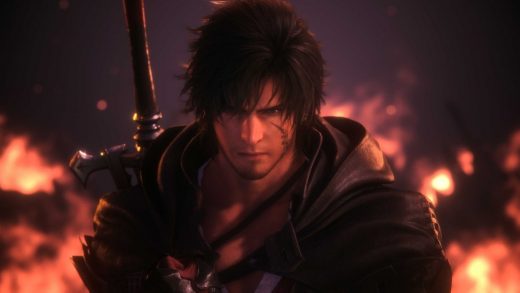
Bullet Train, as the name says, is set on the eponymous Japanese hyper-speed rail network, formally known as the Shinkansen. For a movie, that delivers two things: unmatched (narrative) momentum, and a confined space that forces its characters inside a box. But annoyingly, in what’s partially a trait borrowed from the 2010 Kōtarō Isaka novel that it’s based on, Bullet Train keeps pumping the brakes — literally and metaphorically. The former happens as the Tokaido Shinkansen makes one-minute stops on its journey. Rather than simply use these as gateways to introduce new elements (which it does just once), these stops mostly derail the movie. As for the latter, Bullet Train — out August 4 in India — regularly pauses itself to dump exposition or clue us in on relevant backstory (also exposition).
If you’re going to make an all-out action movie and have most of it take place inside of a bullet train, you got to get creative and ensure the action delivers. But just as he failed on Deadpool 2 (generic and forgettable) and the Fast & Furious spin-off Hobbs & Shaw (incoherent and wholly cartoonish), Bullet Train director David Leitch fails to ignite the spark here too. There isn’t a single choreographed sequence on Bullet Train that bowls you over. It’s a mish mash of ideas that is frequently interrupted by a fellow passenger or a supporting character. There are flashes of interesting bits here and there, but they’re quickly snuffed out in an attempt to be quirky or witty. It’s like Leitch learned all the wrong lessons from his time on Deadpool 2. For all of those film’s wins, the action wasn’t one of them.
And while Leitch had Ryan Reynolds to cover for him on Deadpool 2 — some might say take over as shadow director — and help fuel the film’s humour, he doesn’t have that luxury here. That’s not to say there isn’t any humour here on Bullet Train. But most of it lands like a second draft that clearly needed more polish. I mean, on one occasion, Brad Pitt cracks the super cringey “if you point one finger at me, you’ve got three back at yourself” joke. You know the script — by Zak Olkewicz (Fear Street: Part Two) — needs work if that line makes it into your movie. The two most dedicated bits of humour are courtesy of Pitt spitting out therapeutic self-help talk, and Brian Tyree Henry’s Thomas & Friends analogies. (Both have their origins in the novel.) It might sound weird typed out, but trust me, the Thomas bits grow on you.
Bullet Train to Laal Singh Chaddha, the 7 Biggest Movies in August
Guided by his handler (Sandra Bullock) via an earpiece and armed with a new perspective on life courtesy of his therapist, seasoned American hitman Ladybug (Brad Pitt) boards the Shinkansen at Tokyo for his first assignment after a hiatus. His mission is simple: steal a briefcase and get down at the next stop. But Ladybug, who believes he’s always been unlucky, knows it’s never that simple. (The element of bad and good luck is woven through the movie. Bullet Train uses “luck” as a clever get-out-of-jail card for plot beats than anything else.) Right as he’s about to deboard, he’s accosted by Mexican gangster The Wolf (Benito Antonio Martínez Ocasio, aka Bad Bunny) who’s on a vengeful mission of his own. But pay no attention. The Wolf is one of a few characters who exist as an elaborate joke.
Except thanks to The Wolf, Ladybug ends up in a quagmire, after the briefcase’s previous “owners” — British assassin duo Lemon (Brian Tyree Henry) and Tangerine (Aaron Taylor-Johnson) — realise it’s gone. The briefcase is one of two things they are supposed to be escorting, alongside the previously-kidnapped son of Russian-Japanese crime leader The White Death (Michael Shannon). And somewhere between these stories, there’s room in Bullet Train for The Prince (Joey King), a manipulative young woman posing as a British schoolgirl, who seeks revenge on The White Death for reasons not entirely clear. She forces Yuichi Kimura (Andrew Koji), a former operative of his, to cooperate by threatening his hospitalised young son. (A twist later on reveals how stupidly Kimura behaves.)
While the novel follows Japanese characters in Japan, the movie evidently does not, as you can tell. But if you’re adapting a novel for a major Hollywood studio, your hands are more or less tied. The unwritten rules of the industry necessitate a majority Hollywood cast and a majorly English-speaking film. But then why retain the Japanese setting?
One, it adds nothing to the movie. The novel’s yakuza villains have been replaced by a Russian guy. (I imagine Bullet Train understood the optics of having a Japanese big baddie being vanquished by a bunch of Western guys in a movie set in Japan.) Also, spare a thought for the movie’s narrow worldview where it goes all the way to Japan, but then the villain is still Russian?! Because of course he is, in a movie made for Americans.
The Gray Man Review: $200 Million Dud From Avengers: Endgame Directors
![]()
Joey King in Bullet Train
Photo Credit: Scott Garfield/Sony Pictures
And two, high-speed trains do exist in Western countries. To get around the whitewashing complaints Leitch and Co. knew were coming at them the moment they decided to embark on this path, Bullet Train smartly tries to include people from various countries (American in Pitt and African-American in Zazie Beetz, British in Johnson and Black British in Henry, Mexican in Bad Bunny, Japanese in Koji, Hiroyuki Sanada and Karen Fukuhara, and “Russian” in Shannon and Logan Lerman).
But the diversity doesn’t matter. Bullet Train principally follows the four American and English cast members: Pitt, King, Johnson, and Henry. Pitt brings a laid-back attitude to his assassin that constantly puts him in conflict with the pent-up rage and fury of those around him. Henry and Johnson’s Lemon and Tangerine make a fun duo — while they keep bickering constantly, there’s also a deep bond. King exists to mimic a scared teenager and she does that well. Anything apart from that, I was not sold. It doesn’t help that her character feels tangential for the most part. And when her connection to the story is eventually revealed, it lands with the sound of a stone plonking into the ocean, because Bullet Train hasn’t bothered to commit to the ideas it wants to explore.
Meanwhile, the two principal Japanese cast members — Koji and Sanada — are slotted in full dramatic roles. It’s as if Bullet Train believes the actors are incapable of humour, but to me, that really says more about the writer. They are incapable of thinking of the Japanese actors as people who can be funny. Other supporting cast members may as well not even exist. Karen Fukuhara (The Boys) is slotted into a tiny corner, Zazie Beetz (Joker, Deadpool 2) has a useless role, Sandra Bullock has a thankless role, and Bad Bunny is brought in — for an extended cameo and given a full detailed backstory — just so the audience can laugh at his expense. Their characters have no agency, as they exist to enrich the diversity quota or serve other primary characters.
Thor: Love and Thunder Review: A Madcap Rush That Underuses Everyone
![]()
Brian Tyree Henry, Aaron Taylor-Johnson in Bullet Train
Photo Credit: Scott Garfield/Sony Pictures
Bullet Train tries to make a meal of its flashback scenes — either deeply sad (oh look, there’s a young boy on the ventilator), humorous (Lemon and Tangerine argue if they killed 16 or 17 people on a job), melodramatic (a guy rises through mafia ranks, falls in love, but then loses everything he held dear) or outright coincidental (Ladybug crossed paths with two other assassins during a wedding he catered). But truth be told, they lean more towards exposition than they do towards fun.
These asides are, at times, responsible for introducing Chekhov’s Guns — it sounds weird to hear that in plural, but that’s the kind of movie Bullet Train is — into the wide-ranging plot. There’s three of them planted across the movie, and you just know that they’ve to go off at some point. But the results are either predictable, close to cheating, or underwhelming.
And really, some of those adjectives apply to the movie on the whole too. With a whitewashed and underused cast, a setting that never really justifies itself, and humour that needed more time in the oven, Bullet Train fails most of its accompaniments. And as for its primary ingredient, Leitch has shown that he doesn’t know what makes good action for the third time in a row. (But Hollywood keeps trusting him over and over. He’s making another action flick called The Fall Guys with Ryan Gosling next.) To be fair, Bullet Train is certainly not as bad as that other big budgeted summer action movie from two weeks ago. But it’s also not a good movie on its own.
Bullet Train is released Thursday, August 4 in 2D, IMAX, and 4DX. In India, Bullet Train is available in English, Hindi, Tamil, and Telugu. There is one scene during the credits — that’s all.


